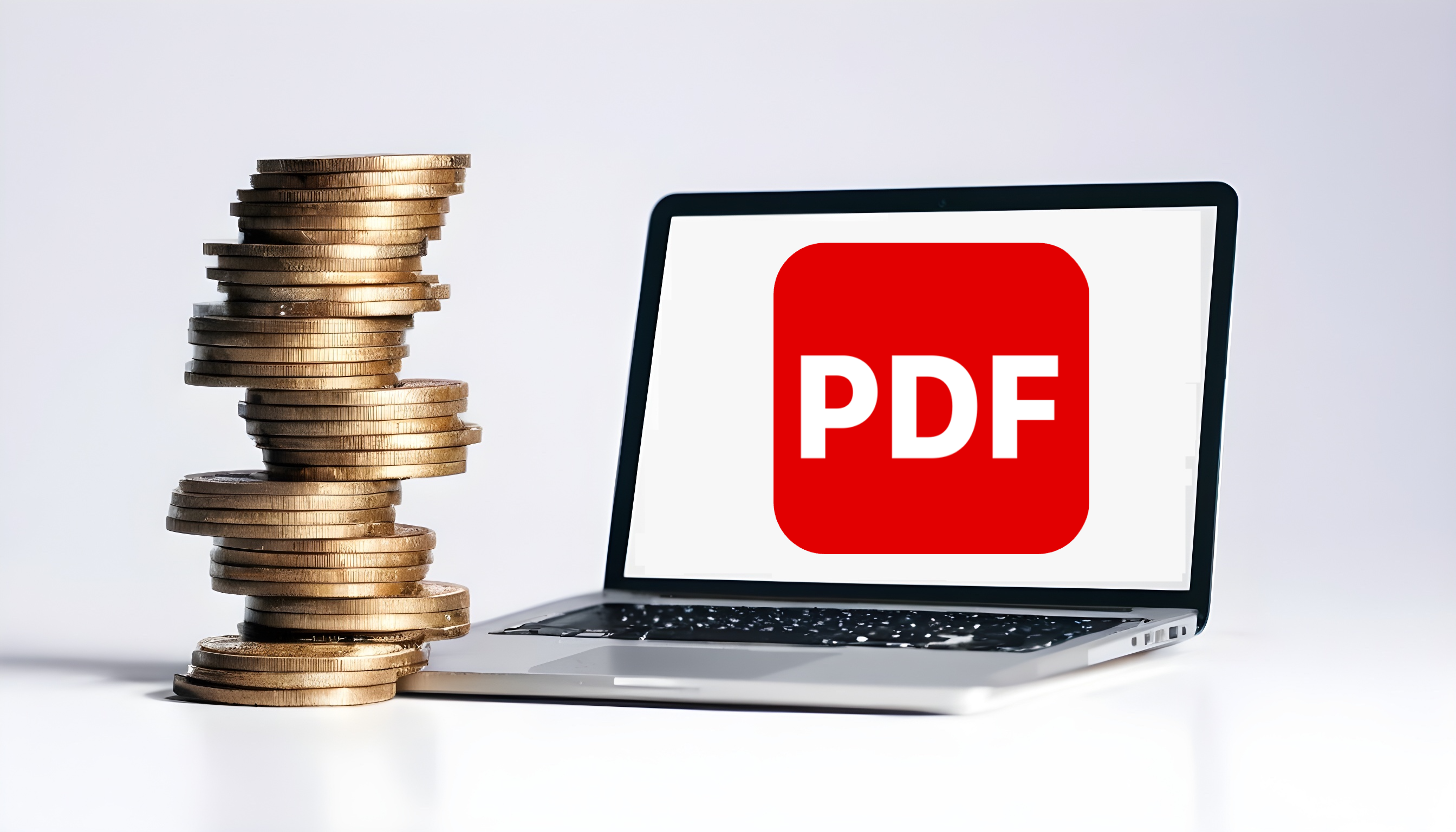Fortifying Financial Integrity: Defending Against Invoice Fraud In The Digital Age
-
20 May, 2024
-
3 min read

We're the first to join the conversation when discussing the business benefits of implementing e-invoicing and AR automation solutions. Once we get started on how e-invoicing transforms the collections cycle and increases the bottom line, that's when we really start getting excited.
However, although there's overwhelming evidence supporting the benefits of AR automation from a workflow, optimisation and even client experience perspective, it's important to explore the necessity of it all regarding the information security landscape and the extent of the vulnerabilities that traditional invoicing processes can expose a company to. In particular, invoice fraud, which can lead to significant financial loss.
Understanding the Threat of Invoice Fraud
Understanding the immediate and real threat of invoice fraud is crucial. No business can consider itself 'under the radar.' In the rapidly expanding digital landscape, it's not a question of if you'll face an information security threat, but when. And when that time comes, being prepared is not just a good idea; it's a necessity.
Another critical fact to consider is that although external parties commit most invoice fraud, internal stakeholders still present a significant risk. In a recent survey, 60% of South African organisations surveyed had fallen victim to fraud in the past two years, and 34% of internal frauds were perpetrated by senior management.
However, 'invoice fraud' often feels like an umbrella term, adding to the complexity and likelihood of businesses desensitising themselves to the threat. What could it look like in practice?
Type of Invoice Fraud
Invoice fraud is a deceptive practice that involves sending fraudulent invoices to unsuspecting recipients. These invoices are designed to appear genuine, often closely imitating legitimate payment requests. They may only have a few altered details, such as the bank account number. The ultimate goal is clear: to deceive the recipient into paying for goods or services they never received or overpaying for those they did. Some common types of invoice fraud include:
Fake invoices: Scammers hack a business' email and send customers fake invoices, with funds to be sent to a scammer's bank account.
Misdirection: Scammers send an email from the business email address asking the customer to pay into a different bank account, citing an administrative error.
Altered invoices: Scammers intercept an invoice and change the bank account details on the invoice to the scammer's bank account.
These fraudulent activities are most common within organisations that still use traditional invoicing methods such as email and PDF. Why? Because they are easy targets! This is where e-invoicing and AR automation solutions come into play, providing enhanced security and fraud prevention.
Leveraging E-Invoicing Solutions for Fraud Prevention
Regarding fortifying your financial integrity, one core pillar forms the foundation of your information security: transparency. This quality is embedded in the very design of e-invoicing solutions. For example, modern e-invoicing platforms may include capabilities such as automated validation checks and digital signatures that help finance teams mitigate fraud risks effectively.
Additionally, e-invoicing provides a secure and standardised avenue to digitally send invoices between businesses' accounting software and their customers, significantly reducing any risk of interception.
Finally, e-invoicing not only provides a secure and standardised avenue for digital invoice transmission but also significantly enhances organisational accountability. Audit logs are maintained and strict protocols are followed to minimise the risk of fraud or scams – all of which decrease the likelihood of compromised sensitive data.
Financial Information Symmetry integrated with Account Management Tools
Fortunately, it's not all doom and gloom when it comes to e-invoicing and cybersecurity best practices. With System1A, businesses not only fortify their financial integrity on autopilot, but simultaneously receive one application to manage all your company's accounts, communications, deliveries, interactions, payments, receipts and reporting.
<<Experience System1A for your Company>>
However, although there's overwhelming evidence supporting the benefits of AR automation from a workflow, optimisation and even client experience perspective, it's important to explore the necessity of it all regarding the information security landscape and the extent of the vulnerabilities that traditional invoicing processes can expose a company to. In particular, invoice fraud, which can lead to significant financial loss.
Understanding the Threat of Invoice Fraud
Understanding the immediate and real threat of invoice fraud is crucial. No business can consider itself 'under the radar.' In the rapidly expanding digital landscape, it's not a question of if you'll face an information security threat, but when. And when that time comes, being prepared is not just a good idea; it's a necessity.
Another critical fact to consider is that although external parties commit most invoice fraud, internal stakeholders still present a significant risk. In a recent survey, 60% of South African organisations surveyed had fallen victim to fraud in the past two years, and 34% of internal frauds were perpetrated by senior management.
However, 'invoice fraud' often feels like an umbrella term, adding to the complexity and likelihood of businesses desensitising themselves to the threat. What could it look like in practice?
Type of Invoice Fraud
Invoice fraud is a deceptive practice that involves sending fraudulent invoices to unsuspecting recipients. These invoices are designed to appear genuine, often closely imitating legitimate payment requests. They may only have a few altered details, such as the bank account number. The ultimate goal is clear: to deceive the recipient into paying for goods or services they never received or overpaying for those they did. Some common types of invoice fraud include:
Fake invoices: Scammers hack a business' email and send customers fake invoices, with funds to be sent to a scammer's bank account.
Misdirection: Scammers send an email from the business email address asking the customer to pay into a different bank account, citing an administrative error.
Altered invoices: Scammers intercept an invoice and change the bank account details on the invoice to the scammer's bank account.
These fraudulent activities are most common within organisations that still use traditional invoicing methods such as email and PDF. Why? Because they are easy targets! This is where e-invoicing and AR automation solutions come into play, providing enhanced security and fraud prevention.
Leveraging E-Invoicing Solutions for Fraud Prevention
Regarding fortifying your financial integrity, one core pillar forms the foundation of your information security: transparency. This quality is embedded in the very design of e-invoicing solutions. For example, modern e-invoicing platforms may include capabilities such as automated validation checks and digital signatures that help finance teams mitigate fraud risks effectively.
Additionally, e-invoicing provides a secure and standardised avenue to digitally send invoices between businesses' accounting software and their customers, significantly reducing any risk of interception.
Finally, e-invoicing not only provides a secure and standardised avenue for digital invoice transmission but also significantly enhances organisational accountability. Audit logs are maintained and strict protocols are followed to minimise the risk of fraud or scams – all of which decrease the likelihood of compromised sensitive data.
Financial Information Symmetry integrated with Account Management Tools
Fortunately, it's not all doom and gloom when it comes to e-invoicing and cybersecurity best practices. With System1A, businesses not only fortify their financial integrity on autopilot, but simultaneously receive one application to manage all your company's accounts, communications, deliveries, interactions, payments, receipts and reporting.
<<Experience System1A for your Company>>
Related insights






